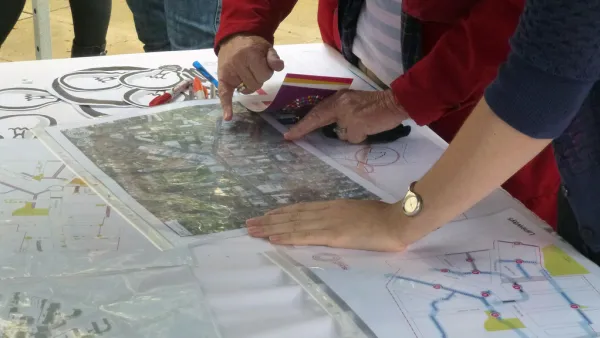While streamlining and anti-NIMBYism are in vogue, Murtaza Baxamusa reminds us what's really at stake.
One person’s certainty is another’s uncertainty. If development projects, especially large developments, attain more certainty through cutting back the administrative and public review process, the result is more uncertainty for impacted neighborhoods and others, warns USC urban planning faculty member and affordable housing developer Murtaza Baxamusa, Ph.D, AICP.
“[T]here is a concerted effort by planners and policymakers locally and statewide, to reduce uncertainty in development project approvals. It takes the form of reducing discretion of public bodies, streamlining permit approvals through the use of specific plans and categorical exemptions, reforming the California Environmental Quality Act, and limiting opportunities for legal challenges to projects.
However, what often occurs under the guise of reducing uncertainty for project proponents is shifting that uncertainty to the many other stakeholders in a project. These stakeholders include elected officials, other regulatory agencies, neighbors, construction suppliers, contractors and building trades, organized labor, community planning groups, neighborhood associations, future residents, future local workforce, nonprofit service providers, and everyone downstream on the environmental impacts of the project.
This shift occurs because there is a cloud of externalities that hovers over most projects, which mushrooms with the scale of the project. These externalities include impacts on regional employment dynamics, increased load on existing infrastructure, stress on the jobs-housing balance, higher utilization of neighborhood services and public safety, disempowerment of minorities, deficiency of strained community amenities and facilities, burden on sensitive receptors within the radius of influence of the project, destruction of historical heritage, industrial waste and toxic emissions, consumption of natural resources, congestion and pollution from automobiles that drive to and from the project, as well as cumulative impacts of growth such as greenhouse gas emissions.”
FULL STORY: In Defense of Uncertainty

Analysis: Cybertruck Fatality Rate Far Exceeds That of Ford Pinto
The Tesla Cybertruck was recalled seven times last year.

National Parks Layoffs Will Cause Communities to Lose Billions
Thousands of essential park workers were laid off this week, just before the busy spring break season.

Retro-silient?: America’s First “Eco-burb,” The Woodlands Turns 50
A master-planned community north of Houston offers lessons on green infrastructure and resilient design, but falls short of its founder’s lofty affordability and walkability goals.

Test News Post 1
This is a summary

Analysis: Cybertruck Fatality Rate Far Exceeds That of Ford Pinto
The Tesla Cybertruck was recalled seven times last year.

Test News Headline 46
Test for the image on the front page.
Urban Design for Planners 1: Software Tools
This six-course series explores essential urban design concepts using open source software and equips planners with the tools they need to participate fully in the urban design process.
Planning for Universal Design
Learn the tools for implementing Universal Design in planning regulations.
EMC Planning Group, Inc.
Planetizen
Planetizen
Mpact (formerly Rail~Volution)
Great Falls Development Authority, Inc.
HUDs Office of Policy Development and Research
NYU Wagner Graduate School of Public Service




























